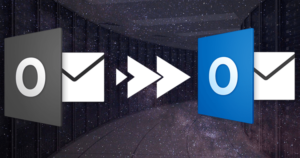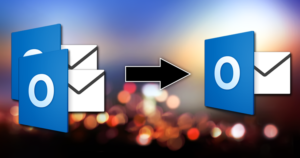Query: I accidentally moved folders from Outlook, and now I am unable to find them again. I need some help. Please provide me with a few easy ways to restore my missing folders in Outlook.
Missing folders is a common issue that most Outlook users may encounter while working with it. Unfortunately, Outlook doesn’t offer any direct facility to find missing folders in the Outlook email client. But don’t worry; we are here with a few simple tricks that will help you restore the missing folders to their original location. This blog will systematically discuss each solution so that every user can understand how to tackle this issue. Read this post until the end and learn how to find missing folders in the Outlook client.
Causes behind missing folders in Microsoft Outlook
Such problems may interrupt the whole organization’s workflow and can be risky for the crucial data stored in the folder. Therefore, resolving the Outlook folder disappearance error is necessary before you face any serious issues. Before going to solutions, let us share a few common causes behind missing Outlook folders.
- You accidentally moved the folders to an unknown location. This usually happens when you drag and drop folders to the desired location but end up driving them to an unknown location.
- Moreover, if you delete folders from Outlook, they move to deleted or trash items. You may face an Outlook folder missing issue due to deleting folders from Microsoft Outlook.
- The connection error is one of the reasons why you are encountering the folder missing issue.
- Also, the Outlook folders can disappear due to the changes after regular updates in your system.
Users can also have other reasons for facing this issue. Moreover, users can face PST file corruption issues if they do not move forward and find missing folders in the Outlook email client.
Ways to restore Outlook’s missing folders
Users can choose between traditional and professional solutions to restore missing folders in the Outlook program. We will share a few ways to resolve this issue using the conventional method in your system. Moreover, we will also share professional third-party software to find missing folders in Outlook in a single go. Let us begin by elaborating on a few manual ways to retrieve Outlook’s missing folders.
How do you find a missing folder in Outlook using manual methods?
Users are not required to use any other third-party software to use the manual ways to restore their disappeared Outlook folders. We will share how users can manually find missing folders in the Outlook email client.
-
Using the data file properties option
- First, open the Outlook program and right-click on the ‘Outlook mailbox.’
- Then, click the Data file properties
- Now, a new wizard will open on your screen. Tap the Folder size
- After that, a list of all folders with their location and size will appear on your screen.
- Find the location of the missing folder you are looking for and go to it to restore the folder to Outlook.
-
Finding folders using the Advanced Find feature
Here, we will give you the steps on how to find a missing folder in Outlook with the help of its advanced search option. Users can follow the steps below to restore folders effectively.
- Launch the Microsoft Outlook application in your system.
- After that, go to the menu bar and click the Search
- Now, find the Search tools option and tap on it. Then, you need to click the Advanced Find option.
- The Advanced Find dialogue box will appear on your screen. After that, provide the name and other details of the missing folder and tap the Browse
- Note down the folder location from the Select Folders wizard and continue with the OK
- Finally, go to the folder location and move it back to the original location or where you want to restore it in Outlook.
-
Import and Export option
Now, we will show how you can use the Outlook Import and Export option to find missing folders in the Outlook program. Moreover, it will export data in PST file format so that you can recover any data missed accidentally. Follow the steps below to use this method and retrieve lost folders back to their original locations.
- First of all, launch and open Microsoft Outlook on your device.
- After that, click on the File tab to move forward.
- Then, go to the Open & Export option and click the Import and Export
- Now, tap the Import from another program or file option and hit the Next button to continue.
- Click the Browse button and include the .pst file you want to process. After that, tap the Next button.
- Set the password if needed, or continue.
- Here, must choose the option that fits your preferences and click on the Finish
Users can find the missing folders in the Outlook email client using these manual solutions. If these methods fail to restore the folders, then you must go for a professional solution.
A professional solution to find missing folders:
Users can use the Shoviv Outlook PST Repair Tool if they fail to find missing folders using the traditional methods or if the PST file gets corrupted. This software provides various features to users. It can quickly repair corrupted PST files, and users can save them in the desired formats, such as EML, MSG, HTML, PST, etc. Moreover, this tool has a simple user interface, so no one will face any issues handing the software to their Windows OS system.
Apart from this, it keeps the folder hierarchy and email’s meta properties while repairing the corrupted PST file. Moreover, this tool can also restore the missing and hardly deleted items in the Outlook email client. This software will be one of the quickest ways for users; they also try its free demo version to check its capability.
Wrapping Up:
This professional blog shares the simple ways to find missing folders in the Outlook email client. Users can use the Shoviv Outlook PST Repair Tool for a perfect and practical approach. This solution is suitable for all; even new users can use this software without any hassles. Apart from this, it also includes various facilities that help users manage their multiple tasks, such as PST to Office 365 and Exchange on-premise migration. This software comes with a free trial version that users can try on their devices to know its functionality and facilities.
- How to Backup and Restore Emails in Webmail? - March 25, 2025
- How to Migrate Outlook to New Computer? - February 15, 2025
- Fix If Outlook Cannot Display the Specific Folder Location - February 1, 2025


